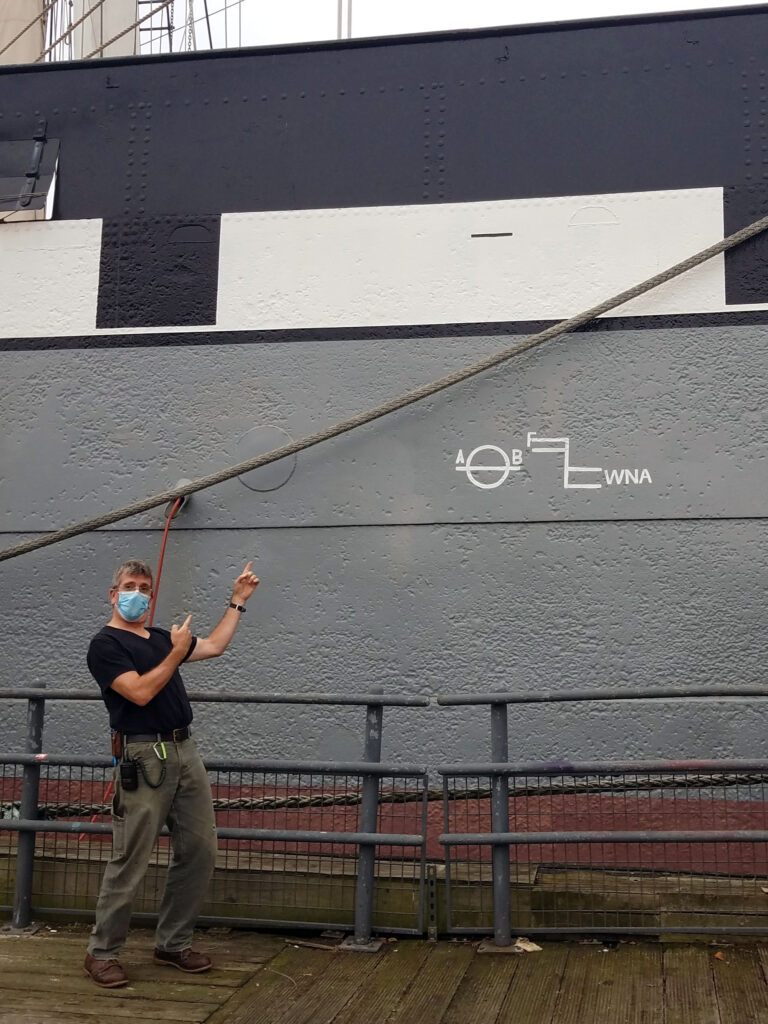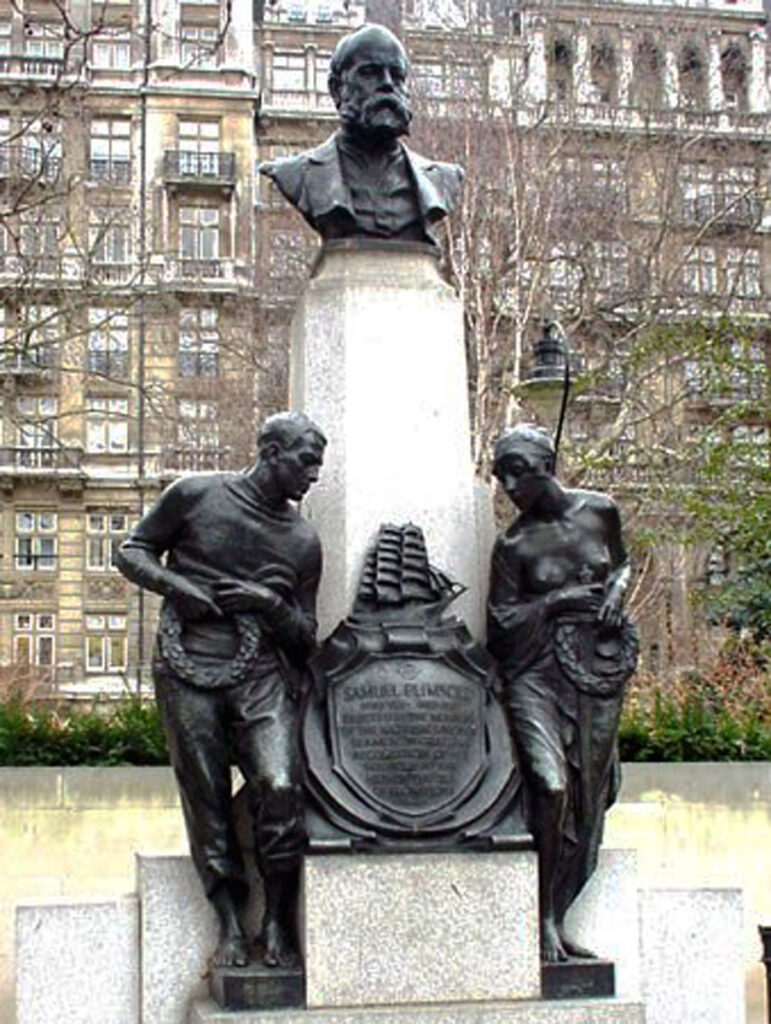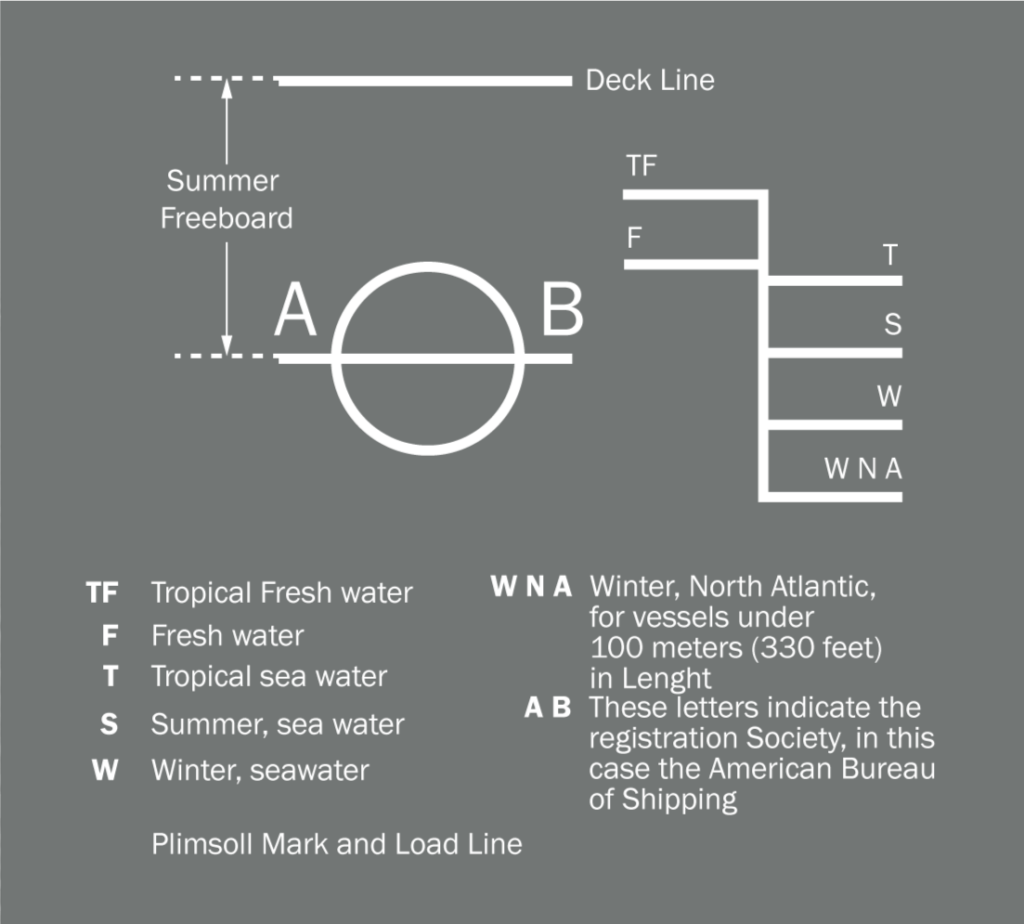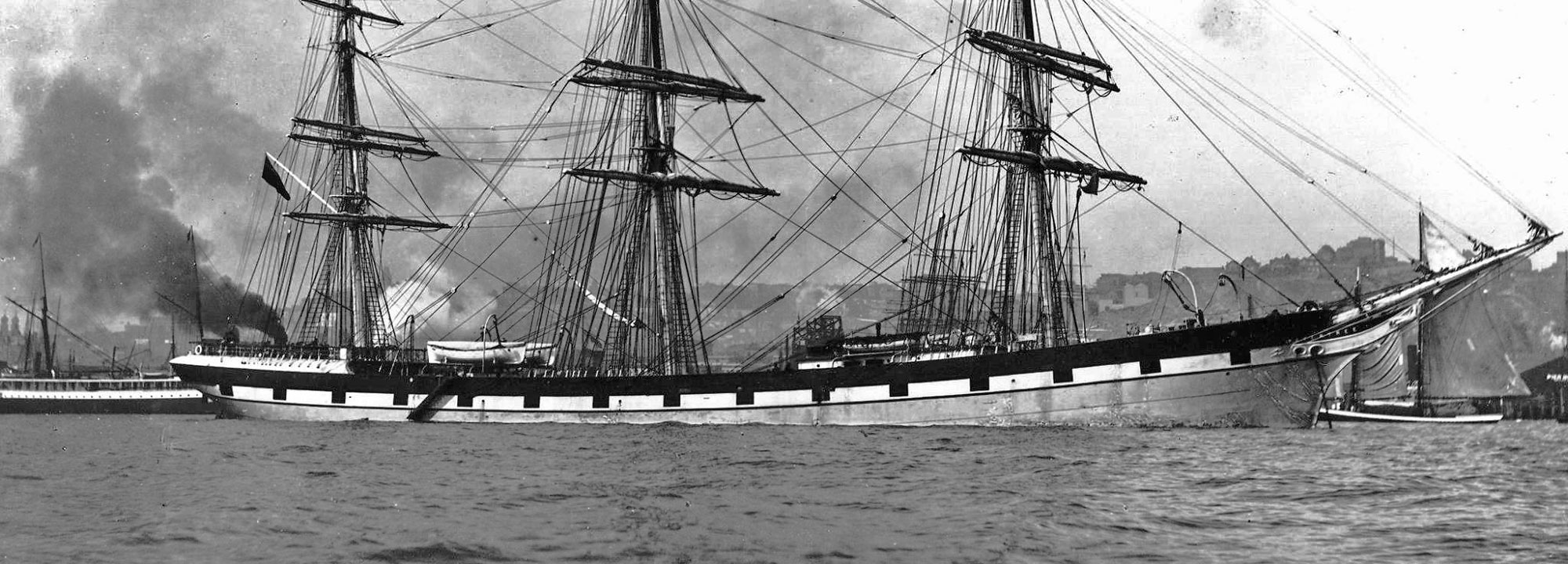What is the meaning of that symbol on the side of Wavertree?
A Seaport Museum Blog
by Malcolm Martin, Fleet Captain and Master, schooner Pioneer
January 14, 2021

When walking on Pier 16, gazing at the beautiful 1885 full rigged ship Wavertree, you may have noticed this marking midships on her side. You may wonder what it is and what it means. Perhaps this glyph looks like some sort of Druid rune. Or perhaps it is an early version of the famous Voyager spacecraft symbolic map of our solar system and galaxy…? (you know, in case alien life comes across Wavertree on the other side of the Milky Way and wonders where it came from!)
In fact, it is much more serious than all that. Like many markings seen on ships, this one relates to regulatory and safety matters. This mark is known as a Plimsoll Line or International Load Line. It is an indicator of the deepest loading a ship can carry and still be sufficiently buoyant, stable and seaworthy. From a distance anyone can see if a vessel has sufficient freeboard to be safe.
Left: What the heck is that marking? Captain Malcolm Martin points to the Plimsoll Mark on Wavertree’s Hull.
The name Plimsoll Line refers to the load line’s champion in the English House of Commons- Samuel Plimsoll (1824-1898)[1]https://www.britannica.com/biography/Samuel-Plimsoll. He was a Liberal and a labor reformer, who focused on sailors’ rights and protections. Known as “The Sailor’s Friend,” he worked to improve the lives and the survival of sailors and limit the abuses and dangerous practices of merchants and vessel owners. At this time, unscrupulous merchants and owners would intentionally overload their vessels. Overloading allowed the merchant to ship more cargo and therefore make more profit from each voyage but it also led to a reduced and potentially dangerous loss of stability and seaworthiness. Such unseaworthy ships would be more likely to founder and sink in rough weather. Of course, along with the vessel loss would be the loss of many or all of the sailors aboard. Yet such recklessness carried no negative impact to the merchants. Not only were they themselves safely ashore but the ships and their cargoes were insured (sometimes for more than they were worth) so the loss of the ship was of little consequence. Plimsoll argued that the life of a merchant sailor was perilous enough – poor work conditions, low wages, bad weather forecasting, and inaccurate position finding all lead to the loss of many sailor’s lives. A profit motive driving the value of their lives even lower was disastrous and indefensible. With Plimsoll’s shepherding, the 1876 Merchant Shipping Act was passed. Among the provisions to make shipping safer, the act required a mark on the side of all British ships which indicated the safe loading limit for the vessel. The impact was sweeping as by the time this act was passed the merchant fleet of the United Kingdom had grown to over six million tons.[2]https://hec.lrfoundation.org.uk/.

According to the USCG, following the requirement in 1906 that all vessels, whether foreign flagged or British, in British waters have load lines,
“…similar load line requirements were individually adopted by other maritime nations, until they were internationally standardized in the Load Line Convention of 1930. The present International Convention on Load Lines (ICLL) was drawn up in 1966 and entered into force on July 21, 1968. It is periodically amended via the Load Line Protocol of 1988 (in force since February 3, 2000). The Convention and its Protocol are administered by the International Maritime Organization (IMO), a specialized agency of the United Nations. Vessels of countries signatory to the Convention are required to have an ICLL certificate for international voyages. As of May 2016, 161 countries (representing 98.5% of world tonnage) are signatory to the 1966 ICLL, and 103 countries (representing 95.3% of world tonnage) are signatory to the 1988 LL Protocol.“[3]https://www.dco.uscg.mil/Load_Lines/
Right: Samuel Plimsoll, memorial in London. Courtesy of Encyclopædia Britannica
Initially the mark was a single horizontal line through a circle. Subsequent revisions of the regulations now have it broken down more specifically to reflect different conditions, depending on the intended voyages. Sea water is denser than fresh water and cold water is denser than tropical. The weather in the North Atlantic in the Winter is notoriously bad. The various conditions are taken into consideration when calculating the maximum immersion allowed. The lines are marked to indicate maximum draft in these different conditions.

At first glance, these lines may appear very close and not worth separate consideration. However, when you realize that on Wavertree a difference of an inch in draft represents approximately 20 tons of cargo, you understand why these various lines are calculated. The overall variation is potentially hundreds of tons. On a larger vessel it could be many thousands of tons difference. Since a vessel may load in one condition and sail to another, following the load lines ensures that regardless of the conditions the vessel would be properly loaded.
Left: Plimsoll Mark illustration similar to what can be found in Knight’s Modern Seamanship by John V. Noel Jr.
There are extensive data and numerous considerations that go into calculating the position of the load line. Not only is the buoyancy calculated but the amount of free board (the amount of hull above the water to the top of the weather deck) the type and location of deck openings and how they are secured, and the structure and shape of the ship hull are all factors that play a role in determining the location of the mark.
The certification of the Load Lines is conducted by one of a number of Shipping Classification Societies. On the sides of the circle appear two letters indicating the issuing agency. There are more than twenty classification organizations worldwide. [4]http://www.iacs.org.uk/ Wavertree’s mark is issued by the American Bureau of Shipping hence “AB”. Some of the other common ones are “BV” for Bureau Veritas originally in Belgium now France, “LR” for Lloyd’s Register (the oldest such agency) in England, “NK” for Nippon Kaiji Kyokai of Japan, “NV” for Det Norske Veritas in Norway and “GL” for Germanischer Lloyd of Germany.
So, next time you are out and about in the harbor, take look for these important markings on the vessels you see. You now have the code to understand their meaning and the history of their significance.

